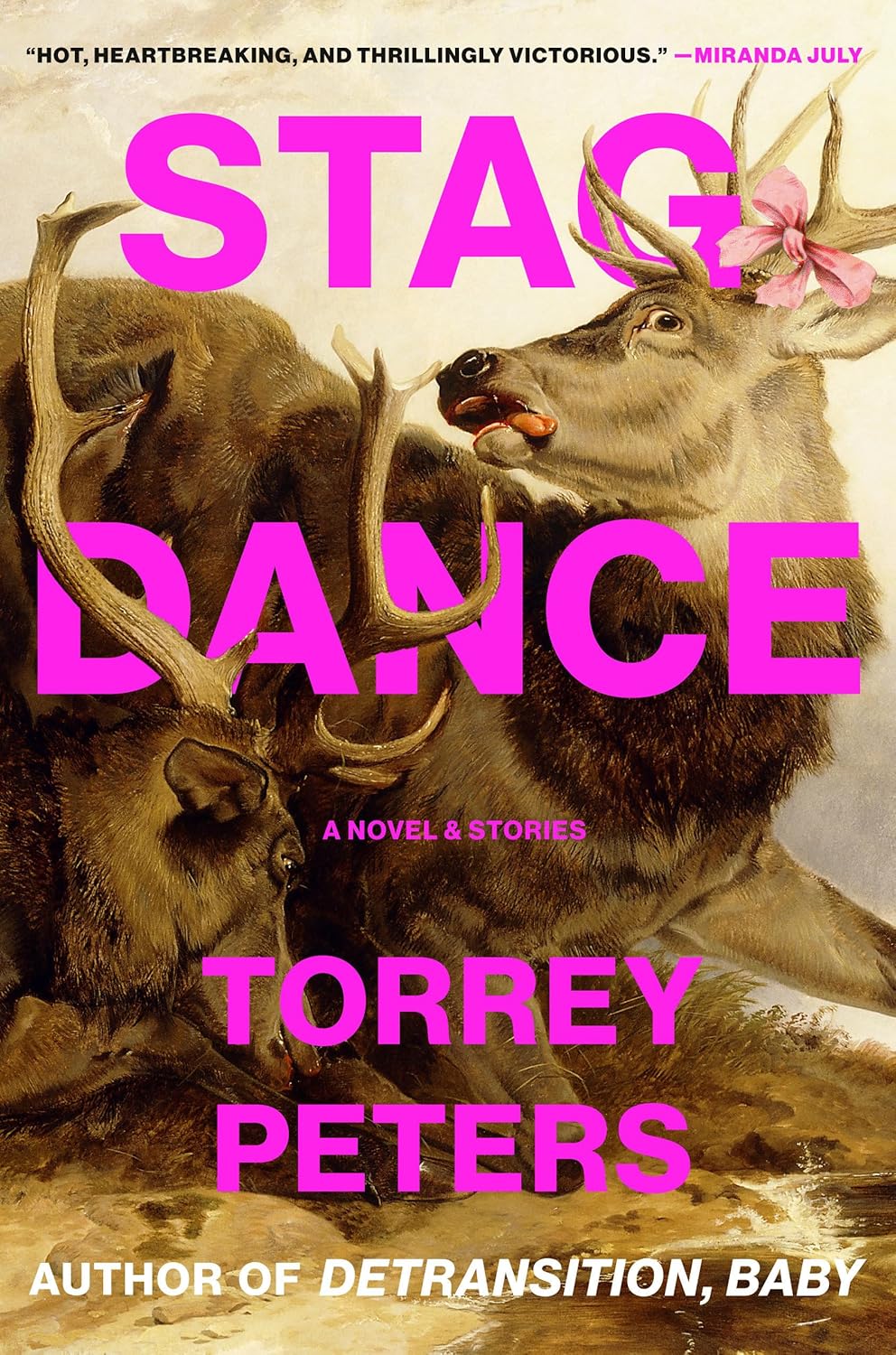Stag Dance: A Novel & Stories
- By Torrey Peters
- Random House
- 304 pp.
- Reviewed by Nick Havey
- April 1, 2025
Gender is explored to rousing effect in this unique hybrid collection.

Torrey Peters’ electrifying debut, Detransition, Baby, was one of my favorite novels of 2021, and I wasn’t alone: It was lauded in almost every review it received. Naturally, I was thrilled when her next book, Stag Dance, a collection of stories wrapped around a novella, was announced. And though such a thing felt impossible when I started it, I just might’ve enjoyed Peters’ second book more than her first.
Stag Dance is, first and foremost, an ambitiously structured work that centers its titular novella — an exploration of gender and performance set against the hardscrabble backdrop of illegal lumber harvesting — amid three shorter pieces: “Infect Your Friends and Loved Ones,” “The Chaser,” and “The Masker.”
We start with “Infect Your Friends and Loved Ones,” a pitch-perfect, multiple-timeline trans apocalypse tale that takes all the best parts of the TV series “The Walking Dead,” “Manhunt,” and “The Last of Us,” as well as the key points from an undergraduate gender-theory course, and turns them into a story I gladly would’ve read 200 more pages of. It poses the provocative question, “What would happen if a bioweapon that forced people to choose their gender — and maintain it via lifelong hormone therapy — was released into the general population?’ The answer makes for a stellar read.
In the next offering, “The Chaser,” Peters takes us to a secluded boarding school and explores what it means for two teenage boys to act on their desire for one another. It’s a biting story about the absolute cruelty teens can (and often do) embrace, and it’s an ideal foil for the book’s final story, “The Masker,” which happens to be my favorite.
“The Masker” features a trans meetup in Las Vegas with a controversial fetishist — the Masker — whose kinks involve latex masks and preying on young trans women. Whereas “The Chaser” is about unchecked desire, “The Masker” reflects on the difference between competition and protection and highlights community, themes central throughout the collection.
Stag Dance itself is a bit over-stylized (hello, lumberjack lingo) and perhaps overly drawn-out, but it’s nonetheless a lovely examination of gender expression. The writing is electric and weird, with the protagonist saying things like, “I doused my saw in kerosene so it’d slide smooth. Then I sighted the fall and made my marks on the trunk. When the fiddle blade bit bark, I made macaroni” and describing the air as smelling like “Christmas.”
While I would’ve preferred a bit less of the novella, the concept at its core — that since the lumberjacks have no women around, their dance needs some volunteer men in drag (“skooches”) to ensure the fun — is both affecting and engaging. Someone call Judith Butler, because this book is all about gender performance, and nothing could be more explicit than wearing (as characters here do) a fabric triangle on your crotch. And with its classic conflict — the brick versus the pretty boy — Stag Dance effectively sells the competition part of the gender-exploration spectrum the work is dealing with.
All in all, Stag Dance is a well-crafted book with a unique structure that delivers on two fronts: It’s entertaining for lay readers and could easily be taught to undergrads in a gender-studies course this very day.
Nick Havey is director of Institutional Research at the American Association of Colleges of Nursing, a thriller and mystery writer, and a lover of all fiction. His work has appeared in the Compulsive Reader, Lambda Literary, and a number of peer-reviewed journals.
.png)
